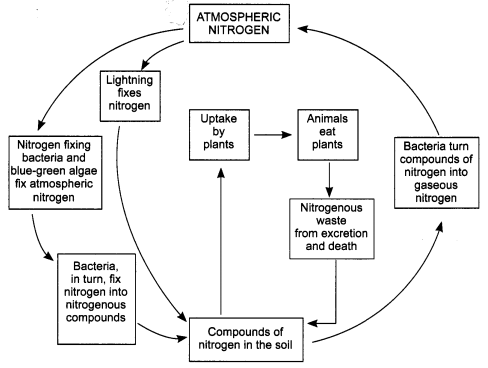
On this page, you will find Microorganisms: Friend and Foe Class 8 Notes Science Chapter 2 Pdf free download. CBSE NCERT Class 8 Science Notes Chapter 2 Microorganisms: Friend and Foe will seemingly help them to revise the important concepts in less time.
CBSE Class 8 Science Notes Chapter 2 Microorganisms: Friend and Foe
Microorganisms: Friend and Foe Class 8 Notes Understanding the Lesson
1. Microorganisms or microbes are extremely small living organisms which cannot be seen with the naked eyes.
2. Microorganisms can survive under all types of environment.
3. Microorganisms are broadly classified into four categories bacteria, fungi, protozoa and some algae.
4. Viruses are quite different from other microorganisms. They reproduce only inside the host organisms.
5. Some of the microorganisms are beneficial for us, while some are harmful for us.
6. Microorganisms are used in making curd, cake, bread, beverages, etc.
7. Out of several microorganisms contained in curd, the bacterium, Lactobacillus promote the formation of curd.
8. Yeast is a fungi which is used to convert sugar into alcohol. It reproduces rapidly and produces carbon dioxide during respiration.
9. The process of conversion of sugar into alcohol in the absence of oxygen is called fermentation.
10. Microorganisms are also used for producing antibiotics and vaccines. These antibiotics and vaccines stop the growth of other disease-causing microbes.
11. Some bacteria and blue green algae fixes atmospheric nitrogen into the soil. Thus increases soil fertility.
12. Microbes play the chief role in making of manures, which are useful for nourishment of soil.
13. Pathogens are disease-causing microorganisms that can enter our body through the air we breathe, the water we drink, and through direct contact with an infected person or through carriers.
14. Microbial diseases that can spread from an infected person to a healthy person through air, water, food or physical contact are called communicable diseases.
15. There are some animals and insects that transfer harmful disease-causing microbes from one body to the other, e.g., flies, mosquitoes, etc., These are called carriers.
16. Anthrax is a harmful human and cattle disease caused by a bacterium.
17. Some microorganisms spoil the food items by producing toxic substances on them. These make the food poisonous causing serious sickness and even death.
18. To save the food from the attack of harmful microbes, some chemicals called preservatives are used. Common preservatives used are common salt, sugar, edible oils, vinegar, sodium benzoate, sodium metabisulphite.
19. Milk is pasteurised for killing harmful microbes. It is heated to about 70° C for 15-30 seconds and then suddenly chilled and stored. This prevents the growth of harmful microbes. This process was given by Louis Pasteur. It is called pasteurisation.
20. Nitrogen Cycle: Some bacteria and blue-green algae present in the soil fix nitrogen gas from the atmosphere and convert it into nitrogenous compounds. These useful nitrogenous compounds are then used by plants from the soil with the help of their roots. They help in the synthesis of proteins and other compounds. On the other hand, there are some bacteria that convert some part of nitrogenous compounds into nitrogen gas again and send them back into the atmosphere.
21. Due to this, nitrogen cycle, the percentage of nitrogen gas in the atmosphere remains more or less constant.

Class 8 Science Chapter 2 Notes Important Terms
Algae: Algae is a vast group of simple, unicellular to multicellular, plant-like organisms which are often present in aquatic habitat, e.g., Chlamydomonas, etc.
Antibiotics: A type of medicine that kills or stops the growth of disease-causing microbes is called as antibiotics.
Antibodies: When harmful pathogens enter our body, our defense mechanism produces substance to fight them, which are called antibodies.
Bacteria: Very small single-celled microbes which have cell walls, but don’t have an organised nucleus and other structures.
Carrier: An animal or insect that transmits pathogens from an infected person to a healthy one is called a carrier.
Communicable diseases: The microbial diseases which can be spread from an infected person to a healthy one through air, water, food or physical contact, etc., are called communicable diseases.
Fermentation: The method in which sugar present in the food is converted into alcohol and carbon dioxide by the microorganisms in absence of oxygen is called fermentation.
Fungi: Fungi are vast groups of microbes which do not have chlorophyll and thus don’t photosynthesise, e.g., yeast, moulds, etc.
Lactobacillus: Bacterium present in curd which promotes its formation.
Microorganisms: Organisms which are too small, to be visible with the naked eyes are called as microorganisms. These include virus, bacteria, fungi, protozoa and a few algae.
Nitrogen cycle: The series of processes by which nitrogen and its compounds are interconverted in the environment and in living organisms, including nitrogen fixation and decomposition.
Nitrogen fixation: The process of conversion of atmospheric nitrogen into its usable forms.
Pasteurisation: The process in which the milk is heated to about 70°C for 15 to 30 seconds and then it is chilled suddenly and stored is called pasteurisation.
Pathogens: Pathogens are disease-causing microorganisms.
Preservation: The method used for prevention of spoiling of food by the action of microbes is called food preservation.
Protozoa: Group of single-celled microorganisms, which are also categorised as small animals are called protozoa.
Rhizobium: Bacteria which is present in the root nodules of leguminous plants and fixes atmospheric nitrogen in the soil is called Rhizobium.
Vaccine: Dead or weakened microbes that produces immunity against a disease causing microbe in the living body is termed as vaccine.
Virus: Viruses are microbes which are living only inside another living cell. They are considered intermediate between living and non-living.
Yeast: Yeast are unicellular microbes categorised under fungi are used in fermentation to produce wine, beer and other beverages.